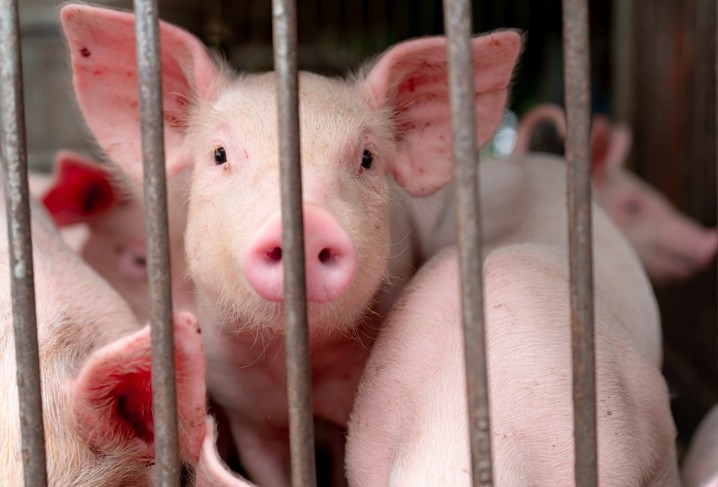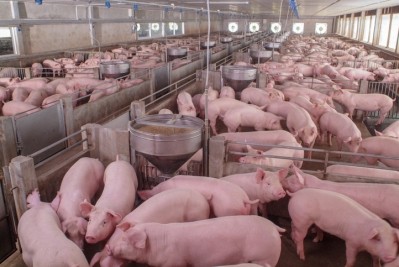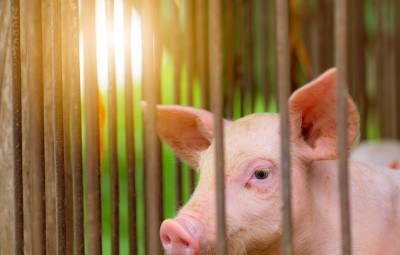special edition: reports from IPPE
Feed mills should watch ingredients, traffic in biosecurity plan

We caught up with Cassandra Jones, associate professor with Kansas State University (K-State), following her presentation during the Biosecurity Symposium – Biosecurity in the face of foreign animal disease – at the International Production and Processing Expo (IPPE) in Atlanta, Georgia.
Jones presented on research and ways to improve biosecurity practices at swine feed mills as part of an effort to address outbreaks of endemic or foreign animal disease – like African Swine Fever (ASF).
There are several steps that feed producers can take to improve facility biosecurity or reduce the risk of contamination, she said during her talk. “Exclude high-risk ingredients, implement biosecurity and mitigate with either chemicals, or thermally or with quarantine times – with something that makes sense for your facility or your products.”
“The most logical thing is to begin some type of environmental monitoring, so you know where you’re at, you know what’s working, [and] you know where you should be investing your time and resources,” she added.
Feed delivery is also an area of concern from a biosecurity standpoint, Jones said. Contamination can come through ingredients, but it can also arrive from farms.
“Feed in one of many different vehicles for disease, but if pathogens enter the feed supply chain we know that the probability of infection is very high,” she said. “While the focus on prevention in ingredients is key, we must also be shifting our emphasis on feed safety and feed biosecurity.”
The takeaway for producers is to start thinking about what can be done at their own facilities or on their production farms, she told us.
“There’s a very knee jerk reaction – what can I ask someone else to do for me? What can I ask my feed company to do? What can I ask my ingredient supplier to do? What product can I put in that’s the magic bullet that takes all these problems away?” Jones said. “That’s not going to happen in this case.”
High-risk ingredients
One step for feed producers it to know what their “high-risk ingredients” are and to stop using them, said Jones.
In relation to ASF, high-risk ingredients tend to be bulk grains and oilseeds from areas with a disease presence, she said. “Anything that could comingle or cross-contaminate through bulk transport with any of those items, those I would label as high risk.”
There is some concern about porcine-based ingredients because of the length of time between animal exposure and when it displays clinical signs, she said. Although the rendering process or the spray-drying process may destroy the pathogen there remains a concern about cross-contamination during transport.
“When we look at sources of pathogen entry, ingredients are only 25% of the problem and sometimes they get a lot of the focus,” she said. “Certainly, when we’re thinking about a foreign animal disease that’s where our risk would lie, but when we think about endemic diseases or transmission that’s where biosecurity very much plays a role.”
Restricting facility traffic
Limiting traffic to feed mills and inside the facility is another area of feed mill biosecurity where attention is needed, Jones said. Establishing who is allowed to move where within a feed mill and wearing what footwear requires consideration.
“Some of the data that we have from both K-state and Vietnam, which is some of the newer data on African Swine Fever virus, shows how, at least in one system, it was the vehicle delivery that was one of the bigger areas of cross-contamination and risk – not necessarily the feed or the ingredients themselves,” she said. “We don’t have enough work going on in this area.”
How feed is delivered to potentially infected farms is also a concern because there is a possibility the feed truck can take contamination back to a feed mill or to other farms, she said. There needs to be an effort made to stop the feed mill from becoming a contact point between infected and non-infected facilities.
During a research project in Vietnam, more than 750 samples were gathered from a feed manufacturing site and about 1% were positive for ASF, Jones said. The facility was using a chemical agent in its feed and no feed or ingredient samples tested positive for the disease.
“But, of the environmental surfaces we collected, almost all of the positive locations were from delivery vehicles – feed delivery trucks again going on to affected farms and then on to other farms,” she said. The other area that tested positive, within the feed mill, was on a pathway where delivery truck drivers walked.
“We have to be careful – we have all these intense biosecurity things at the farm set up to prevent contaminated pigs from contaminating pigs at other farms, but we have not always applied the same rules to feed delivery trucks or to truck drivers,” she said.
Feed mill structure and development
Looking forward, feed production facilities may have examples to follow in other production areas and from human medicine, said Jones. The questions feed mills ask today are reminiscent of those being asked in hospitals 20 years ago.
“There’s a lot for us to learn from the poultry feed, from the pet food, from the human food industry but I also think that because of the evolving pathogens and risk that the feed industry … is going to look a lot different than it does today,” she said. “I would bet that our feed industry in the US is going to look, in 10 to 20 years, is going to look much more like pet food production.”
However, she said, the pressure may not come from regulation but from preparation as companies and facilities that are early adopters of new practices will weather future disease challenges.















